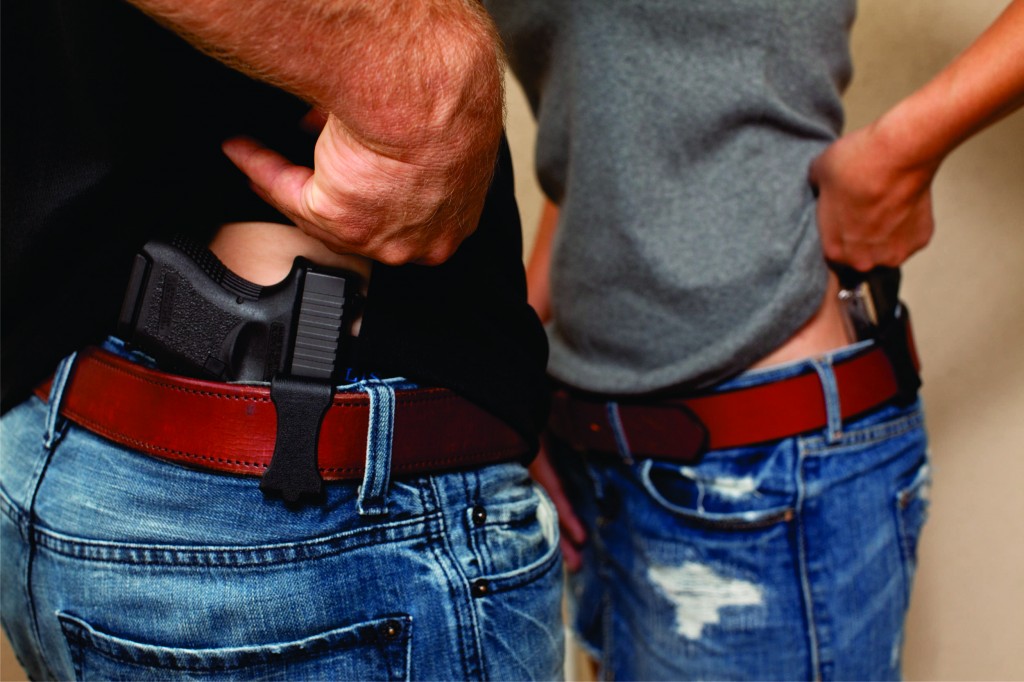
Versacarry
Individual hand and body size will have a great effect on your ultimate decision on which weapon to carry and how to position it. Barrels of ink have been spilled recommending one holster model over another, but it’s a personal choice. That said, a simple solution that has retailers clamoring to stock it is the Versacarry.
It is so simple and minimally sized that it would be easy to discount it as cheap. But I picked one up at a show on a friend’s recommendation and have never regretted it. It’s so simple, it’s brilliant. Best of all, it is caliber-specific (not model-specific), so it can be used for multiple guns and comes in five different sizes, allowing it to be matched to the weapon and style you carry. The Versacarry works as well for a tiny .22 caliber as it does for a fully sized .45 — at a fraction of the price of other quality holsters.
The Upside
In certain undercover assignments, the requirements may dictate how and where you carry your weapon. However, there is a strong case for appendix carry whenever possible.
Carrying a pistol forward of the hip line, with the muzzle pointed down or slightly forward, causes the shooter’s wrist to be locked when first gripping the pistol. This position gives the fastest possible presentation in a confrontation and most closely mimics the position in which uniformed officers with modern holsters would carry, making the hand position familiar, too.
For proof, look no further than competitive-shooting organizations such as the International Practical Shooting Confederation, International Defensive Pistol Association or United States Practical Shooting Association — and the way the fastest shooters are carrying. While competition and the real world don’t always equate, this is one case where there are enough similarities to take notice.
For official dress, a suit jacket or coat (buttoned) will easily prevent brandishing and keep you from being confronted by security at the local bank. In more casual situations, an oversized shirt left untucked — perhaps the lower button or two fastened depending on your body size — will easily provide the necessary cover.
Drawbacks
The downside to appendix carry is simple. The muzzle is pointed solidly at the leg or other sensitive areas. Suits left unbuttoned will also cause a bit of a problem with appendix carry. For law enforcement professionals, an easy solution is to carry your badge in front of your weapon. This will calm most citizens and normally keep nervous bank tellers from hitting the panic button.
Appendix carry will also tell you if it’s time to start dieting again. Likewise, the closer the weapon is to the belt buckle, the more uncomfortable you’ll be when seated for long periods of time. The same can be said for carrying on the small of the back or the rear of the hip.
Options
The design of the weapon can also affect the position in which you carry. Take, for example, Kimber’s Super Carry. The rear of the grip has been beveled and all the sharp edges have been given Kimber’s carry-melt treatment. The idea was to make it more comfortable without sacrificing usability. The checkering was replaced with a scalloped treatment for extra comfort without endangering a solid hand purchase. Other favorites would be GLOCK’s G19, G17 or double-action revolvers of appropriate size.
The main thing to remember is that you’ll need a grip short enough to be easily concealable without sacrificing a positive purchase when you have to snatch it quickly from concealment.



